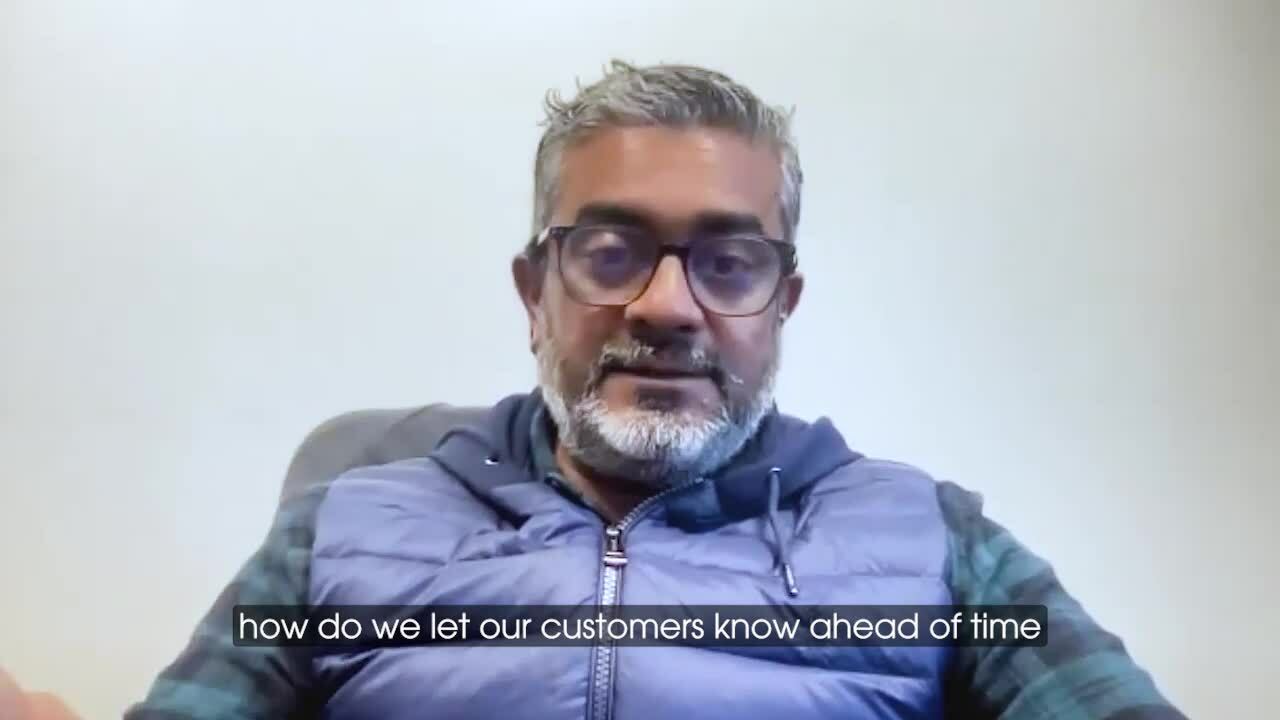How FedEx Uses Data To Keep the Supply Chain Moving



Fulfillment involves so much more than getting products to consumers. FedEx Dataworks CEO Sriram Krishnasamy explains how insights from the process improve operations for retailers.
FedEx understood the importance of data long before most other companies. Back in 1978, then-chairman Fred Smith famously said that information about the package is as important as the package itself. This devotion to data evolved into Dataworks, the new organization within FedEx Services that leverages its vast amount of information. FedEx continues to collect data from its 18 million daily shipments across 220 countries.
FedEx Dataworks strives to turn data into insights, according to CEO Sriram Krishnasamy. Those efforts help FedEx improve operations to better serve customers and consumers.
“Leveraging data and real-time intelligence is one aspect of it, but the bigger transformation play is how we create collaborative data ecosystems — connecting the entire supply chain all the way from the point of demand to the point of delivery and returns,” Krishnasamy said.

Rethinking retail logistics and the supply chain
FedEx has a birds-eye view of all shipments. The Dataworks team drills down to gather data about consumer demand, packages transported, best routes to take, and more. It shares these data-driven supply chain insights with retail partners who then use them to improve their own supply chains.
Meet evolving customer expectations
See how FedEx and Salesforce are partnering to simplify shipping, ecommerce, and supply chain management.



Armed with FedEx insights, retailers can refine their logistics in innovative ways. They see expected delivery dates and use this information to plan promotions and establish “order by” dates.
Retailers also spot other opportunities to plan capacity and position inventory for easier ingestion into the shipping network. They may discover that a new retail location would serve customers better, or that an existing location should offer shoppers the option to buy online, pick up in store. These kinds of improvements really pay off during peak shopping periods, like the holidays.
Another opportunity for the supply chain ecosystem is easing exchange and return processes. FedEx can generate labels and accept returns at its more than 10,000 locations to make returns easier for shoppers.
The collaborative data ecosystem helps both retailers and FedEx by offering greater visibility. “It’s an infinite loop,” Krishnasamy said. “Every dollar of investment you make in creating better visibility drives optimization. Every dollar of investment you make in optimization drives better visibility. And that’s how we all benefit – retailers serve their customers and it helps FedEx be proactive in planning our network and dealing with the ups and downs of demand.”
Improving the customer experience
Shoppers are still shifting spending online. Globally, digital commerce grew 87% from 2019 to 2021. Most of those online orders require delivery, which makes the retailer-shipper partnership critically important. “Shopping is shipping,” Krishnasamy said.
Dataworks uses artificial intelligence to analyze data and make predictions related to retail logistics, including shipping times and delivery dates. “We can anticipate expected delivery dates based on machine learning in real time — when can a consumer actually expect a package given the real-time status of the network and external events like weather,” Krishnasamy explained.
Shoppers see this information as they browse. They might learn that an order placed in the next 24 hours will arrive by Wednesday. “It significantly improves retailers’ cart abandonment rate,” he said.
This differentiated e-commerce solution generates more business and builds customer loyalty. The next time the shopper needs an item by a certain date, they’ll remember which retailer can promise it.
Delays still happen, but when they do, retailers can smooth the experience for anxious customers. Service agents see where packages are, identify the cause of the delay, and update when they should arrive. “It’s not just the insight, but it’s about how you contextualize that insight and provide it at the right empathetic point in order for it to make a difference in how they manage their consumer’s experience,” Krishnasamy said.
If factors change again and further affect the delivery time, both retailers and their customers get immediate updates.
Delivering a better future
Many shoppers have concerns beyond the timely delivery of online purchases. They also worry about their impact on the environment. Data helps retailers quantify these effects while reducing them with streamlined logistics.
FedEx has set a goal of carbon neutral operations by 2040, and is currently working to better understand carbon footprint at the package level. It will share its learnings to empower brands and shoppers to make more sustainable choices.
It’s just one more way Dataworks enables better decision-making at every step of the retail logistics experience.
Uplevel your customer experience with connected commerce
Sell wherever your customers shop, and fulfill on any channel.




























